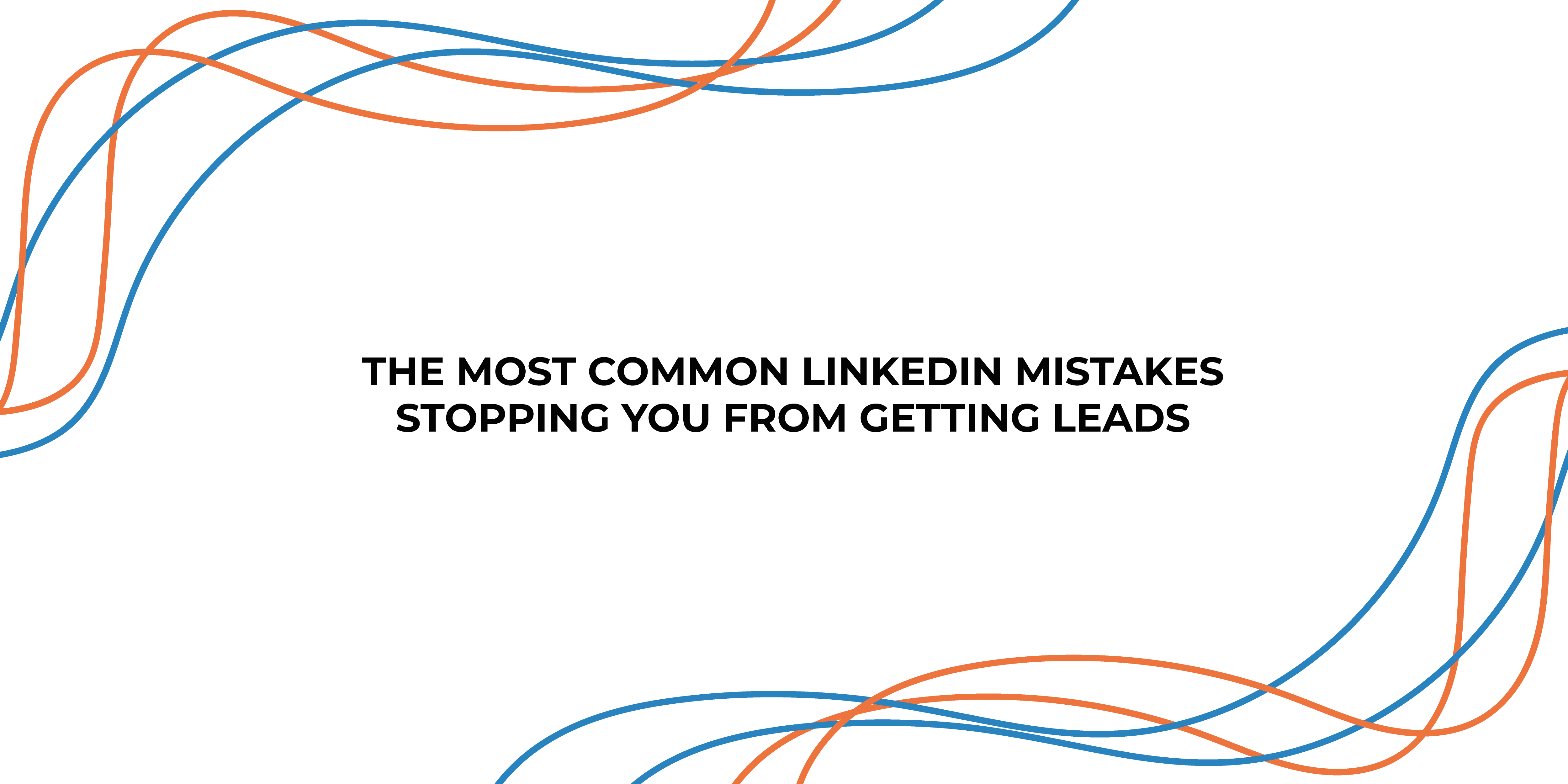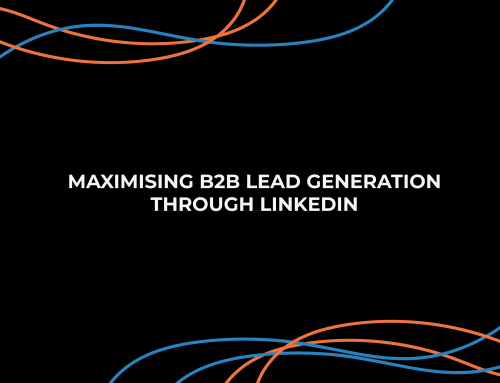LinkedIn is a fantastic platform for lead generation – in fact, according to a study by LinkedIn, it is the number one platform for lead generation, with 4 out of 5 of its members driving business decisions. However, success depends on how well you use it. Unfortunately, there are some common mistakes we see time and time again on LinkedIn that can prevent people from generating those all-important leads.
In today’s article, we will break it all down and share with you some of the most common LinkedIn mistakes that may be stopping you from getting leads – and the solutions that can help.
1. Incomplete or out-of-date LinkedIn profile
One of the most common mistakes is having an incomplete profile – or failing to update it when changes have happened in your career so the information is out of date and inaccurate. You need to make sure your LinkedIn profile is complete, including a professional photo, detailed work experience, and a comprehensive summary. Use keywords relevant to your industry throughout your profile for better search visibility.
It is also important to maintain a consistent professional image, including a cohesive profile photo, banner, and a well-crafted headline – a weak or generic headline that doesn’t showcase your expertise. Similarly, write a captivating summary that showcases your skills, achievements, and passion for your field. Use the summary to tell your professional story and engage visitors.
2. Not personalising LinkedIn connection requests
When it comes to making the most of LinkedIn, taking the time to personalise connection requests can make a huge difference. Instead of sending a generic request, which might give off an aloof impression, consider including a thoughtful and personalised message. There are a few different approaches you can take. Maybe explain why you want to connect – perhaps you have a mutual connection, went to the same university, or maybe expressing genuine admiration for their work. By providing context to your connection request, you not only show that you’ve taken the time to research and understand the person but also demonstrate a sincere interest in establishing a meaningful professional relationship. People are more likely to connect when they feel there’s a genuine reason behind the request.
Adapt your message to the specific individual and situation. Whether it’s expressing a shared professional interest, acknowledging a recent achievement, or simply expressing your enthusiasm to connect, these personalised touches can go a long way in fostering a positive response.
Remember, personalisation is not just about making a connection; it’s about laying the foundation for a meaningful and mutually beneficial professional relationship on LinkedIn. So, take the extra step to craft personalised messages, and you’ll likely see an increase in the acceptance rate of your connection requests.
3. Overlooking engaging content
It’s not just about having a profile – it’s about actively engaging with your network. Imagine being in your connections’ shoes; if someone rarely shares valuable content or insights, why would others want to connect or stay connected? To stand out, it’s important to regularly share industry-relevant, engaging content. This could include insightful articles, updates on recent developments, or even your own professional experiences. By consistently contributing valuable information, you not only showcase your expertise but also provide meaningful content for your network.
Being proactive in sharing content doesn’t only benefit you; it enriches your connections’ feeds, making your profile more visible and engaging. It’s a two-way street – the more you contribute, the more likely others are to reciprocate, creating a dynamic and thriving professional network.
Remember, on platforms like LinkedIn, where networking and professional branding are key, staying active and sharing valuable content helps you stand out, establish credibility, and keep your network engaged and interested in what you have to offer. So, don’t overlook the power of consistent and relevant content-sharing in building a strong and influential presence on LinkedIn.
4. Ignoring engagement opportunities
It’s not just about presenting your own content; actively engaging with others is equally crucial. Ignoring engagement opportunities by failing to interact with your network’s content or participate in discussions is a missed chance to expand your reach and build meaningful relationships.
The mistake lies in the passivity of not liking, commenting, or sharing content from your connections. Engagement is a two-way street, and by overlooking these opportunities, you not only limit your visibility but also miss the chance to foster connections based on shared interests and insights.
The solution is simple: actively participate in the discussions happening within your network. Like and comment on posts that resonate with you, share valuable content to amplify its reach, and, most importantly, engage in meaningful conversations. By doing so, you not only indicate your interest in the topics at hand but also showcase your knowledge and perspective to a broader audience.
Remember, LinkedIn is a platform built on professional networking, and engaging with others’ content is a fundamental aspect of creating a vibrant and interactive professional community. So, make it a habit to actively participate, and you’ll find that your network not only expands but becomes more dynamic and supportive over time.
5. Pitching too soon
Remember, whatever you do on LinkedIn, do not jump the gun. “Pitching too early” on LinkedIn is a common misstep that can negatively impact your professional relationships. The mistake lies in presenting your products or services immediately after connecting, potentially coming off as pushy or insincere. Instead of building rapport, this approach may discourage your connections.
The solution involves a more strategic and patient approach. Rather than jumping straight into promotional content, take the time to build relationships. Engage in conversations, whether through comments on posts or private messages. Demonstrate your expertise and commitment by providing value, sharing relevant insights, or offering assistance where possible.
Establishing trust is key before introducing your products or services. By patiently cultivating relationships, you position yourself as a reliable and knowledgeable professional within your network. This foundation of trust increases the likelihood that your connections will be open to hearing about your offerings when the time is right.
Final thoughts
By avoiding these common LinkedIn mistakes, you can improve your profile’s effectiveness in generating leads and building valuable professional connections. Regularly reassess and update your strategy based on the changing dynamics of the platform.




